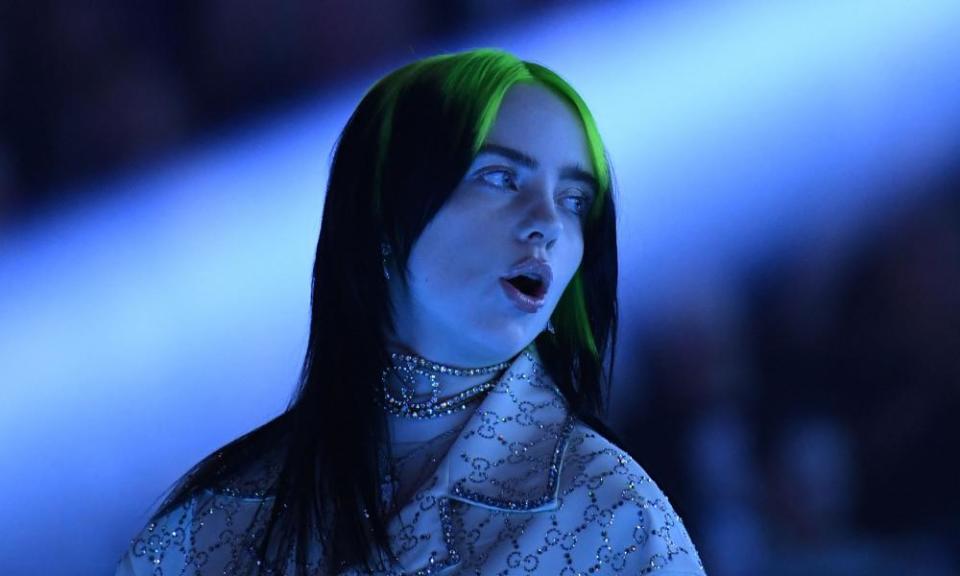Billie Eilish review – immersive adventure with fish and spiders

Of all the online attempts to fill the gaping chasm where live music used to be before coronavirus, Billie Eilish’s livestream has attracted the most attention. Understandably so. The 20-year-old has a far keener visual sense than any of her peers, expressed through her album covers and self-directed videos. If a pop artist can come up with something eye-catching enough to make you temporarily forget there’s no chance of proper gigs for the foreseeable future, goes the thinking, it’s probably her.
For your 30 bucks, you get a 55-minute performance, a “pre-show” that involves clips from a forthcoming Eilish documentary and a variety of celebrities – including Lizzo and Eilish’s “surrogate dad” Steve Carrell – imploring fans to vote in next month’s US election.
A lot of fuss has been pre-emptively made about the “extended reality” technology used in the staging of Eilish’s performance, but what the show itself most closely resembles is a souped-up version of a late-60s or early-70s pop TV special devoted to a single artist, an impression underlined by the fact that between-song changes to the set are masked by the screen fading to black.
Clearly, though, things have moved on. The technology means Eilish and her fellow musicians – brother Finneas and drummer Andrew Marshall – appear to be performing underwater, with fish swimming around them, or in the middle of a glistening cartoon forest, or, for All the Good Girls Go to Hell, in a corridor of images of environmental catastrophe and protest marches that stretches into infinity.
It isn’t clear how live the music is, although Eilish’s vocals audibly are, and all the more impactful for being devoid of the showboating latter-day pop singers tend to go in for: during Xanny, a kind of 21st-century teenage equivalent of Neil Young’s The Needle and the Damage Done, her voice comes out as a kind of sighing mumble, as if she’s so bored with druggy excess she can barely be bothered to articulate her contempt.
Occasionally, you’re struck by the feeling that the simplest staging ideas are the most effective: a single spotlight that strobes and casts a Nosferatu-like shadow behind the singer, a vast spider that crawls around the stage during You Should See Me in a Crown. And occasionally the technology is used to create a simulacrum of the communal experience of a gig. Fans watching at home find webcam images of themselves flashed up on the screens. Some of the fans appear prepared for this, holding up homemade signs and making heart shapes with their hands. Others do not: one girl is so startled by the sight of herself, there seems every chance she’ll be carried away from her computer on a stretcher.
It’s both striking and entertaining – no one who stumped up the cash is likely to feel short-changed – but it doesn’t feel anything like being at a live show, as Eilish acknowledges. “The only benefit of not having a crowd,” she says, “is that none of you are in the pit, fainting, like usual.”
The time may come when someone harnesses technology in order to produce an online live music experience that’s fully, game-changingly immersive. This isn’t it, but as stopgap exercises go, it’s impressive, if haunted by the sense that no one really knows how long the gap it’s stopping will last.
“One day, if we vote the orange man out, we might see each other again,” says Eilish, before the screen fades to black again and the credits roll.

